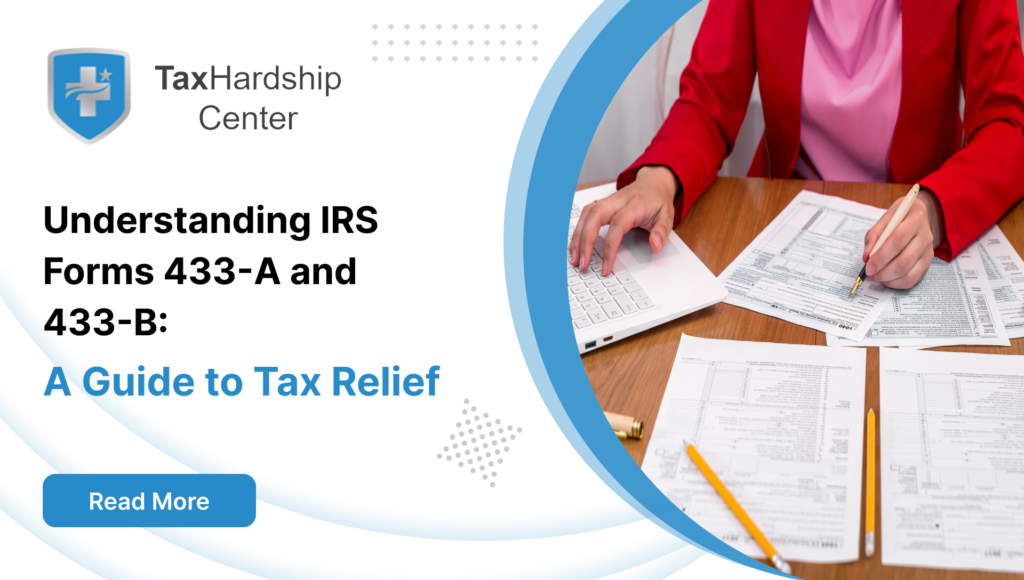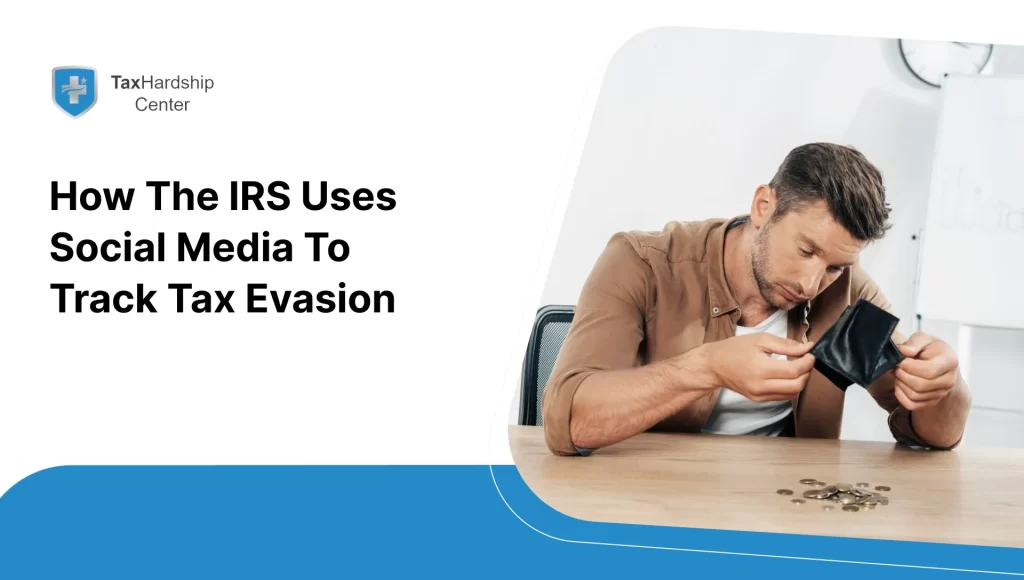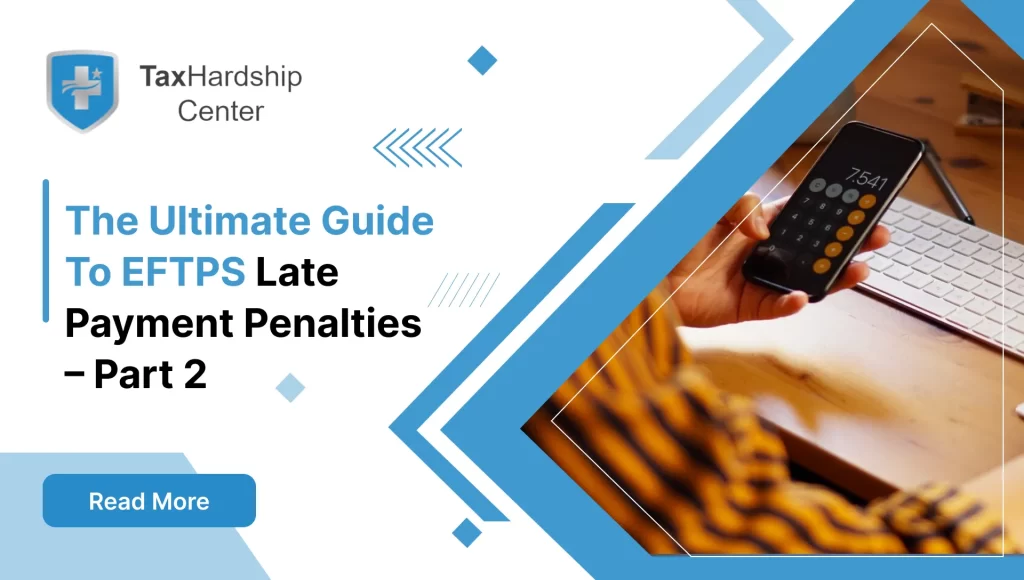Completing IRS Forms 433-A and 433-B is critical for wage earners and businesses seeking tax relief or payment plans. These forms provide detailed financial information to the IRS, essential for negotiating tax debts, installment agreements, or other tax relief options. Understanding how to fill out these forms properly can significantly impact the resolution of your tax situation.
This comprehensive guide provides clear, actionable steps for completing IRS Forms 433-A and 433-B, addressing the needs and concerns of those seeking reliable tax resolution services. Through careful preparation and full disclosure, taxpayers can resolve their tax debts successfully.
Understanding IRS Forms 433-A and 433-B
Purpose of the Forms
The IRS uses Forms 433-A and 433-B to collect comprehensive financial information from taxpayers. This information assists the IRS in determining the taxpayer’s ability to pay their tax debt either in a lump sum or through an installment agreement. The primary goal is to ensure taxpayers disclose all pertinent details about their income, expenses, and assets, allowing the IRS to make an informed decision about tax relief.
Who Should Use These Forms
Form 433-A is intended for individuals, including wage earners and self-employed persons, who must negotiate tax debts with the IRS. Form 433-A is comprehensive and includes sections on personal information, employment, income, expenses, and asset details.
Form 433-B: This form is designed for businesses seeking tax relief. It requires detailed information about the business’s financial condition, including assets, liabilities, income, and expenses.
How Tax Hardship Center Eases Tax Concerns
Navigating the complexities of IRS Forms 433-A and 433-B, along with other tax regulations, can be overwhelming. At Tax Hardship Center, we understand the challenges individuals and businesses face and are here to help ensure a smooth tax resolution process.
Our experts can assist with:
- Completing IRS Forms 433-A and 433-B: We’ll guide you through the intricacies of these forms and help you provide accurate and detailed financial information.
- Accurate Data Entry: To prevent issues with your tax resolution, avoid errors, and ensure your Forms 433-A and 433-B are completed correctly.
- Ongoing Support: We provide continuous support to help you manage your tax situation, ensure compliance with the IRS, and address any changes in your financial circumstances.
- Tax Planning Advice: Receive personalized advice on tax planning to optimize your financial situation and manage your tax liabilities effectively.
Focus on resolving your tax issues; we’ll handle the complexities of IRS Forms 433-A and 433-B! Schedule a free consultation with the Tax Hardship Center today.
Preparing to Fill Out Form 433-A
Gathering Necessary Documents
Before you begin filling out Form 433-A, gathering all necessary documents and information is essential. This includes:
- Recent pay stubs
- Bank account statements
- Monthly expense records
- Credit card statements
- Documentation of any outstanding debts
- Proof of ownership and value of assets such as vehicles and real estate
Having these documents at hand will streamline the process and ensure accuracy.
Understanding Each Section
Form 433-A is divided into several sections, each requiring specific types of information:
- Section 1: Personal Information—This section requires basic personal details, including name, Social Security Number, and contact information.
- Section 2: Employment Information for Wage Earners – Includes employer details and income information.
- Section 3: Other Financial Information – Covers additional income sources and financial obligations.
- Section 4: Personal Asset Information – Involves listing assets and their values.
- Section 5: Monthly Income and Expense Analysis – Analyze your monthly financial situation.
- Section 6: Additional Information – Any other relevant financial details.
Step-by-Step Instructions for Form 433-A
- Personal and Household Information
Enter your details, including your name, Social Security Number, and address. You will also need to provide information about your household, such as the number of dependents and their Social Security Numbers. Accurate reporting here is crucial for a comprehensive assessment of your financial situation.
- Employment and Asset Information
Next, provide details about your current employment, including the employer’s name, address, and contact information. You must include your business name and detailed income records if you are self-employed.
For the asset section, list all personal assets, including real estate, vehicles, bank accounts, and investments. Ensure you provide accurate market values for these assets, as this information will be used to evaluate your ability to pay the tax debt.
- Monthly Income and Expense Analysis
In this section, you must provide a detailed breakdown of your monthly income and expenses. This includes wages, business income, rental income, and any other sources of income. Expenses should include housing, utilities, transportation, food, medical, and other necessities. Providing accurate figures here helps the IRS understand your financial situation and determine a feasible payment plan.
- Additional Information
This section is for any other financial information affecting your ability to pay your tax debt. This could include legal obligations, alimony, child support, or other significant financial commitments. Full disclosure is necessary to ensure the IRS has a complete picture of your financial health.
Completing Form 433-B for Businesses
Organizing Business Financial Records
Before filling out Form 433-B, businesses must organize their financial records meticulously. This includes:
- Business bank account statements
- Recent profit and loss statements
- Accounts receivable and payable records
- Documentation of business assets and liabilities
Thorough preparation ensures that the form is completed accurately and comprehensively.
Detailed Walkthrough of Each Section
Form 433-B is structured to capture detailed business financial information:
- Section 1: Business Information—This section requires basic details about the business, including name, address, and type of business.
- Section 2: Business Asset Information – List all business assets, such as property, equipment, and inventory, along with their market values.
- Section 3: Income Information – Provide detailed information about the business’s income sources and amounts.
- Section 4: Expenses – Itemize business expenses, including rent, utilities, payroll, and other operational costs.
- Section 5: Additional Information – Any other relevant financial details affecting the business’s ability to pay its tax debt.
Tips for Accurate and Complete Submissions
Avoiding Common Mistakes
To avoid common errors:
- Double-check all entries for accuracy.
- Ensure all required fields are completed.
- Avoid estimation; provide precise figures wherever possible.
Ensuring Full Disclosure
Full disclosure is paramount. Any attempt to hide assets or income can result in severe penalties and delay the tax resolution process. Be truthful and provide complete financial details to the IRS.
After Submission: What to Expect
IRS Review Process
The IRS will review the documents thoroughly once you submit Form 433-A or 433-B. They may request additional information or clarification. Responding promptly to these requests can expedite the review process.
Possible Outcomes
The IRS may respond with:
- Acceptance of your proposed payment plan or installment agreement
- Request for additional documentation
- Rejection of your proposal with alternative suggestions
Understanding these potential outcomes helps you prepare for the resolution process’s next steps.
Seeking Professional Help
When to Consult a Tax Professional
Consider consulting a tax professional if:
- Your tax debt is substantial and complex.
- You are uncertain about completing the forms correctly.
- You need assistance in negotiating with the IRS.
How the Tax Hardship Center Can Assist
The Tax Hardship Center and similar services can provide invaluable assistance. We offer expertise in navigating tax laws, preparing accurate forms, and negotiating favorable terms with the IRS. Their support can make a significant difference in achieving a successful tax resolution.
Conclusion
Completing Forms 433-A and 433-B is crucial for individuals and businesses seeking tax relief or installment agreements. Proper preparation, full disclosure, and understanding of each section of these forms contribute to a successful tax resolution process. Seeking professional help when needed can ensure the forms are completed correctly and expeditiously, paving the way for a favorable outcome with the IRS.
By following this guide, wage earners and businesses can navigate the complexities of IRS Form 433-A and 433-B, leading to effective tax relief and a more manageable financial future.
Why Tax Hardship Center?
1. Hassle-Free Assistance:
Say goodbye to sleepless nights and endless tax-related stress. At the Tax Hardship Center, we believe in simplifying the complex. Our team of experts is dedicated to guiding you through every step of the process, ensuring that your tax concerns are met with precision and care.
2. 14-Day Money Back Guarantee:
We’re so confident in our ability to ease your tax worries that we offer a 14-day money-back guarantee. If, for any reason, you’re not satisfied with our service, we’ll gladly refund your investment. Your peace of mind is our top priority!
3. Free Consultation:
Are you curious about how we can transform your tax experience? Book a free consultation now! Our team will assess your situation, answer your questions, and provide free insights tailored to your needs.
4. Nationwide Coverage:
No matter which corner of the United States you call home, the Tax Hardship Center covers you. We proudly serve all 50 states, bringing our expertise to your doorstep. Wherever you are, our commitment to excellence follows.
FAQs:
1. What is the primary purpose of IRS Forms 433-A and 433-B?
Forms 433-A and 433-B collect comprehensive financial information from individuals and businesses. This information helps the IRS determine taxpayers’ ability to pay their tax debt in a lump sum or through an installment agreement.
2. Who should use Form 433-A?
Form 433-A is intended for individuals, including wage earners and self-employed persons, who must negotiate tax debts with the IRS. It includes sections on personal information, employment, income, expenses, and asset details.
3. What documents should I gather before filling out Form 433-A?
Before filling out Form 433-A, gather recent pay stubs, bank account statements, monthly expense records, credit card statements, documentation of any outstanding debts, and proof of ownership and value of assets such as vehicles and real estate.
4. What information is required in Section 4 of Form 433-A?
Section 4 of Form 433-A requires listing all personal assets, including real estate, vehicles, bank accounts, and investments. Accurate market values for these assets are necessary to evaluate your ability to pay the tax debt.
5. When should a business use Form 433-B?
A business should use Form 433-B when seeking tax relief from the IRS. The form requires detailed information about the business’s financial condition, including assets, liabilities, income, and expenses.








